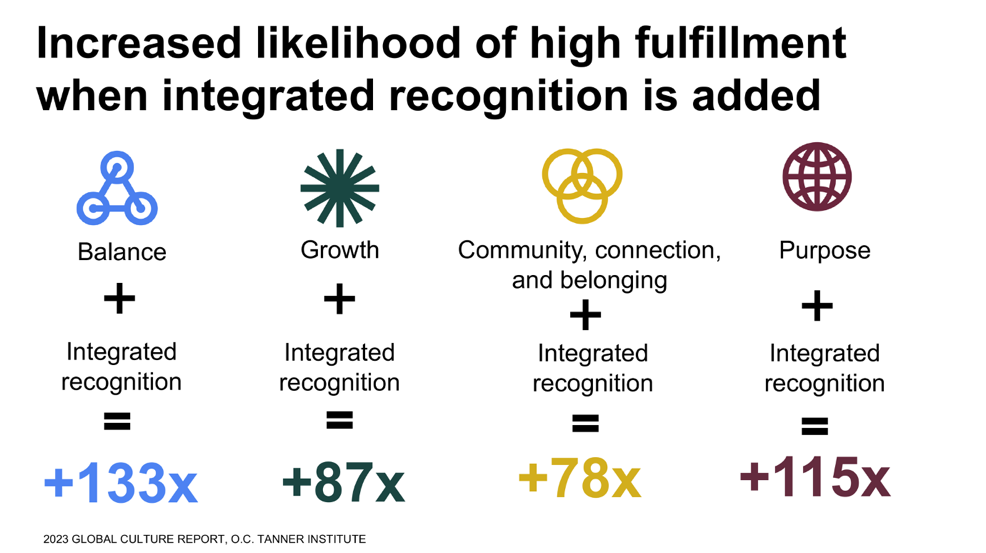
What's the difference between a good culture and a great one? The answer's simpler than you think

The art of appreciation is something all good managers have to learn – and if the pandemic proved anything, it’s that a little “thank you” can go a long way for morale.
As Employee Appreciation Day grows closer (March 1, 2023), employers across Canada are taking the time to delve into their own cultures – and look at what role reward and recognition plays in their organizational strategy.
“Appreciation is a wonderful thing. It makes what is excellent in others belong to us as well.” —Voltaire
Meghan Stettler, director at the O.C. Tanner Institute, tells HRD that the difference between a “good” culture and a “great” one comes down to a mix of satisfaction, autonomy and, of course, recognition.
“Good cultures provide good jobs,” says Stettler. “Great cultures change lives. Coming out of crisis, employees are looking for more than job satisfaction – they want life satisfaction. This requires organizations and leaders to shape strategies and personalized experiences that fulfill the basic psychological needs of employees, namely the need for community and belonging, growth, balance (time autonomy), and purpose.
“It’s no surprise that highly fulfilled employees plan to stay three years longer at their organizations than those who aren’t.”
Interestingly, when integrated recognition is added into the mix, “it vastly increases the likelihood of high fulfillment,” she says. “So, use recognition to showcase how employees are contributing to outcomes that matter and reinforce the four areas of fulfillment.”
According to research from O.C. Tanner, 45% of employees believe their current reward and recognition programs are stale – with more and more employees calling for personalized systems instead of “one-size-fits-all” initiatives. Because, as data tells us, employees don’t all crave the same recognition – what works for one worker won’t necessarily work for their colleague.
And if there’s a time to understand what works for your people, it’s now. Canada has been rocked by major rounds of layoffs from top tech giants. Spotify, Amazon, Salesforce (to name a few) have all announced layoffs recently. Layoffs have the propensity to leave remaining employees rightly worried and confused – which is where HR has to step in.
To qualm employee anxiety, employers should be looking at recognition packages – and building them with the help of their people. After all, leaders need to first understand what incentivizes them. Do they prefer perks over pay? Do company-wide shout-outs do more for them than individual pats on the back?
“The roots of all goodness lie in the soil of appreciation for goodness.” - Dalai Lama
As Stettler tells HRD, their research points to the importance of “community” and “belonging” in strengthening reward programs.
“As the world welcomes 2023, organizations are still facing a battle for talent, an exhausted workforce, pressure to control costs, and feelings of disconnection from working a part,” she says. “Yet, what gives workplace cultures their strength in uncertain times? In a word: community.
“While we discovered that community is comprised of eight essential elements, we landed on a simple definition: belonging with a sense of purpose. In fact, when employees have a strong workplace community, we see an eight-times increase in the odds that employees feel like they belong — and that affects several important outcomes, from retention to burnout.”

Stettler offered three ways to improve the sense of community within your organizations: